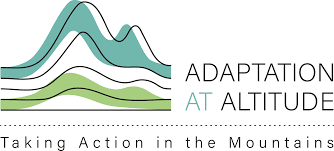Discovering potentially useful mountain datasets and other potentially useful resources is often a time-consuming and frustrating task that requires speculative web searches or trawling through the vast array of data portals that have proliferated. Alternatively, institutional or legacy knowledge may have to be relied upon. These difficulties takes researchers, practitioners, and policy-makers away from their core tasks, and mean that the most suitable and/or latest datasets for a given application may not be consistently used.
With a view to help alleviate some of these problems, the GEO Mountains General Inventory seeks to provide comprehensive metadata related to open datasets and data portals that may be useful in the context of mountainous applications, as well as the corresponding web links. The Inventory is primarily focused on remotely sensed and modelled datasets spanning multiple disciplines, but also includes contains a variety of open-source software, model codes, and tools that may be useful. Both regional and global resources are included. Where in situ datasets can be associated with long-term monitoring infrastructure, they should ideally be represented in the GEO Mountains Inventory of In Situ Observational Infrastructure; otherwise, they may appear in the General Inventory.
The entire inventory can be downloaded by following the link provided below.
Blank cells in the inventory indicate N/A or TBC. The "Data Level" is assessed as follows:
Level 0: Raw sensor output
Level 1: Processed (e.g. quality checked / translated to physical quantity of interest using a simple formula)
Level 2: Heavily derived (e.g. output of a numerical model / algorithm)
Citation and use
If you make use of the GEO Mountains General Inventory in your work, we would be grateful if you would cite it as:
GEO Mountains (2023). GEO Mountains General Inventory v1.4. DOI: 10.6084/m9.figshare.19322573.v5
The licence assigned is CC BY 4.0. It is imperative to also to cite the original data providers and check their licence conditions. Whilst we have made every effort to include only potentially useful datasets, users are responsible for verifying the suitability of a given dataset or datasets for their intended application(s); this is especially important for datasets with continental or global coverage, which may not always provide locally meaningful information in complex mountain topography.
Datasets that extend beyond mountainous areas can be clipped using the layers available from the USGS's Global Mountain Explorer 2.0
We warmly acknowledge Andrea Fischer (IGF/ÖAW), Michael Allchin (Arctic Institute of North America), and Daniel Ruiz-Carrascal (Columbia University in the City of New York), Sofia Marisol Endara Huanca (Servicio Nacional de Meteorología e Hidrología del Perú), Shiva Khanal (Ministry of Forest and Environment, Nepal) and Nazzareno Diodato (Program of the University Corporation for Atmospheric Research) for their contributions to v1. The MRI Coordination Office staff members who worked on the project were Lia Franchini, Gabrielle Vance, James Thornton and Alexandrine Massot.
Outlook
We welcome contributions to the inventory from the community via this form. You may either propose datasets, data portals, and other resources (e.g. software, tools) that are not currently included, or alternatively refine / update the information pertaining to existing entries by indicating the corresponding record ID(s). Bulk submissions can be transmitted to the GEO Mountains Secretariat by email (geomountains@mountainresearchinitiative.org). If you feel that a certain dataset or data portal has now been superseded or should otherwise not be listed, please inform us by writing to the same address. Updated versions of the inventory will be released periodically, depending on the frequency of contributions.







